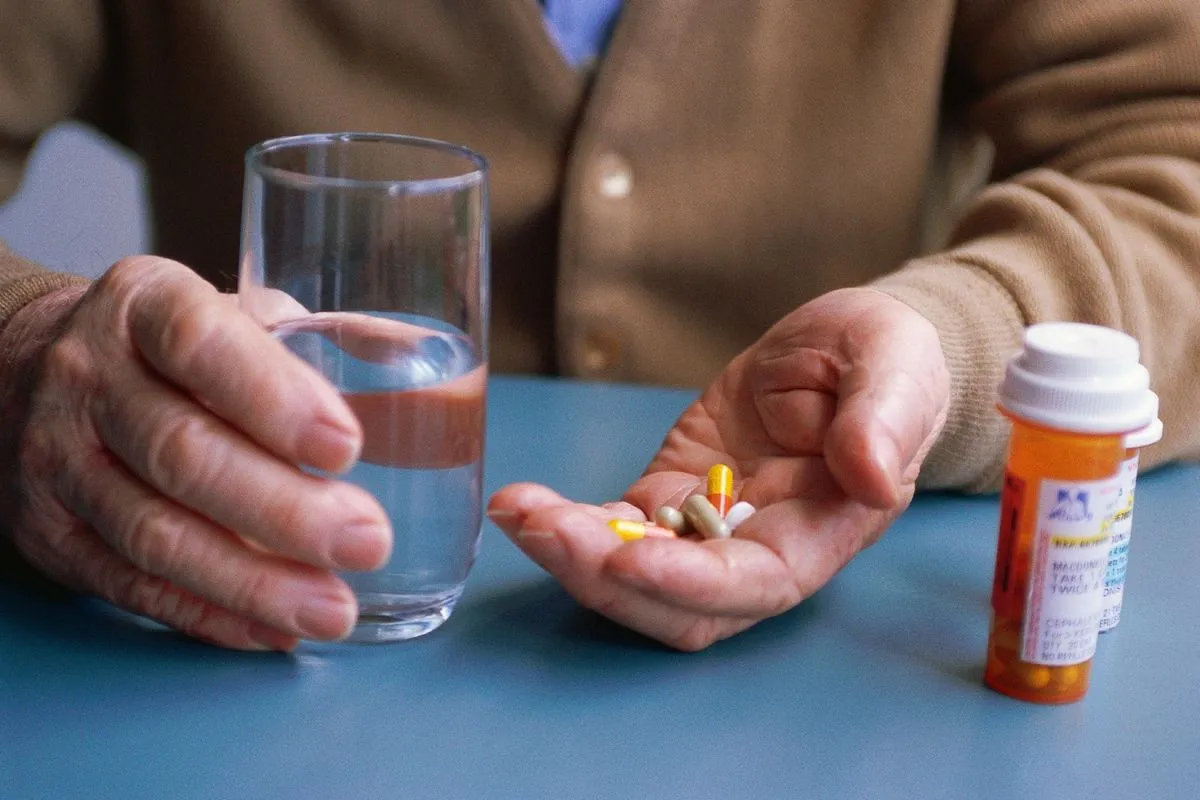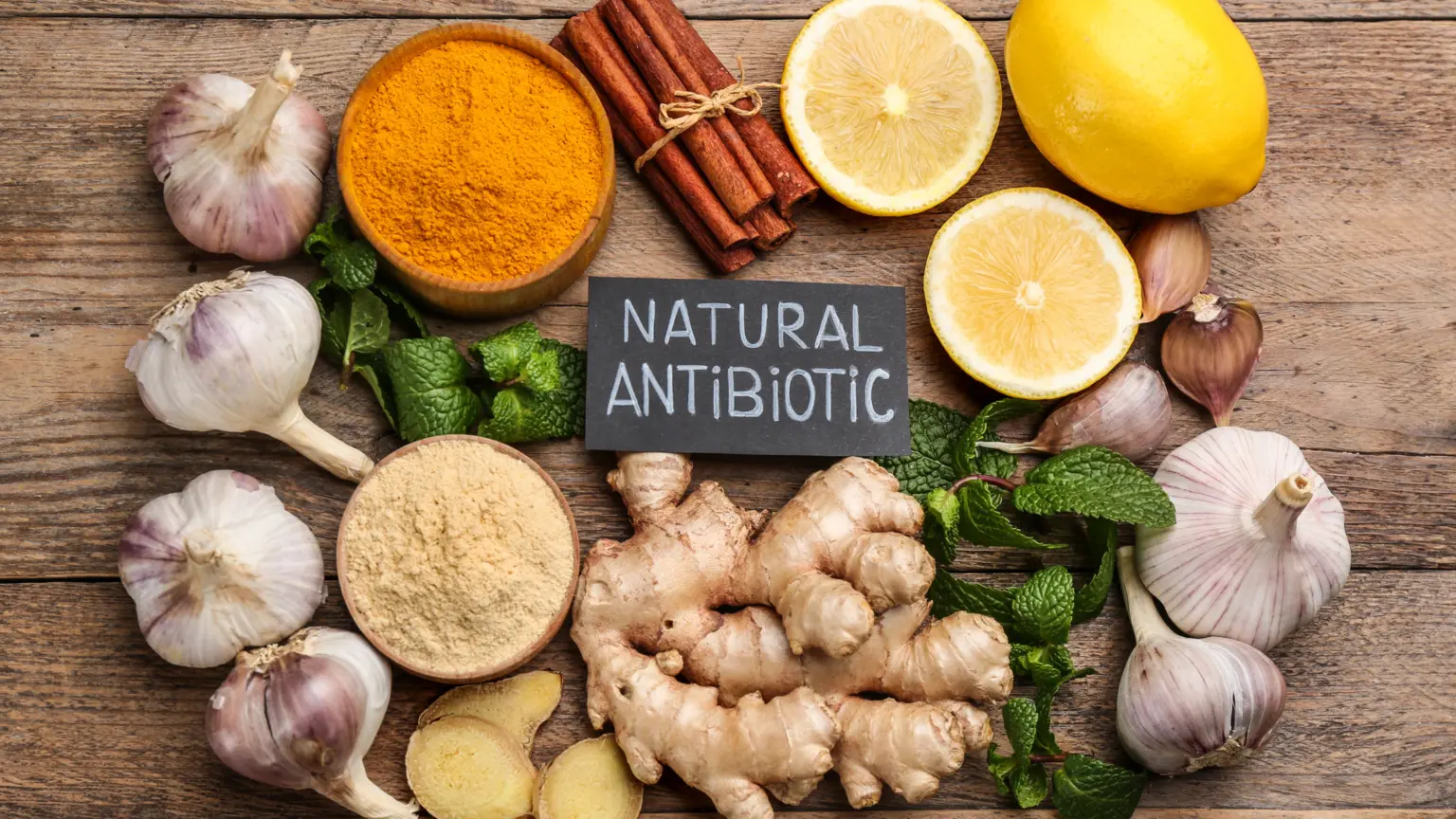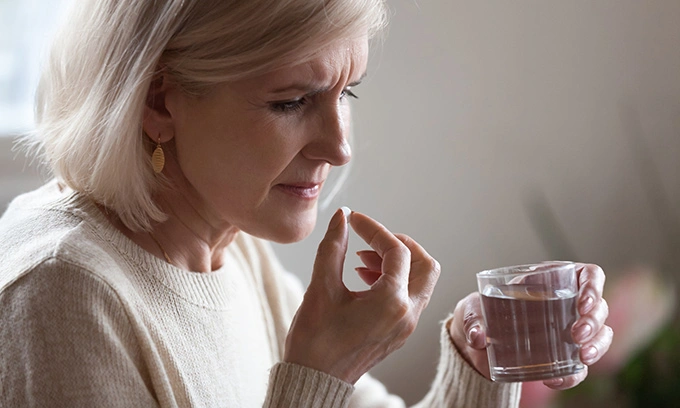
Effects of Unnecessary Antibiotic Use among Geriatric
Antibiotic use among geriatric can have significant side effects and should always be guided by a physician. Antibiotics are not a modern treatment; natural forms of them have existed throughout human history. Importantly, antibiotics are ineffective against viral infections, and the focus should instead be on preventive treatments, maintaining hygiene, adequate fluid intake, and sufficient rest.
Conditions such as sinusitis, pharyngitis, laryngitis, bronchitis, and pneumonia (lung inflammation) are named based on their location and each requires a separate treatment approach. This article from the humanhealthmag will explore the adverse effects of excessive antibiotics use in the elderly people and introduce natural antibiotics.
What Is Antibiotic?
An antibiotic (from French: Antibiotique) is a product or substance produced by a microorganism that destroys or inhibits the growth of other microorganisms. Antibiotics are obtained through two main methods: natural and synthetic. They can be classified as bacteriostatic, which stop the growth of pathogenic cells, or bactericidal, which kill pathogenic cells. Natural antibiotics are derived from microorganisms such as fungi and bacteria.
Cases of Antibiotic Prescription
- Preventing the spread of infectious disease;
- Preventing the worsening or becoming dangerous of an illness;
- Accelerating the healing of injuries or illnesses;
- Preventing the occurrence of consequences resulting from a bacterial infection.
Side Effects of Unnecessary Antibiotic Use among Geriatric
The side effects of self-medication with antibiotic use among geriatric can lead to antibiotic resistance, where pathogenic microbes develop genetic mutations that render them resistant to these drugs, resulting in new generations that are difficult to combat.

Side Effects of Strong Antibiotic Use in Elderly Patients
Some antibiotics are not suitable for individuals with specific medical conditions or for pregnant or breastfeeding women. It is crucial never to take antibiotics that have not been prescribed to you, and never to “borrow” them from friends or family. The most common side effects of antibiotics affect the gastrointestinal system, occurring in about 10% of cases.
Gastrointestinal Side Effects of Antibiotics include:
- Diarrhea
- Vomiting
- Abdominal pain
- Nausea
- Bloating and indigestion
- Loss of appetite
These side effects of unnecessary antibiotics use among geriatric are usually mild and should resolve on their own after completing the treatment course.
Drug interactions involving antibiotics in the elderly can be particularly dangerous. Combining certain heart medications with specific antibiotics may be fatal.
Spironolactone (Aldactone), a diuretic used to manage heart failure, when taken concurrently with the antibiotic co-trimoxazole, can dangerously elevate blood potassium levels. This hyperkalemia can lead to irregular heartbeats, a potentially lethal condition. A study involving approximately 206,000 patients over 66 treated with spironolactone for 17 years found about 12,000 deaths, with 349 occurring within two weeks of co-trimoxazole use.
Co-trimoxazole is commonly prescribed for urinary tract infections8. Both drugs increase blood potassium levels, and their combined use can elevate potassium to hazardous levels, which can be especially difficult for elderly individuals with heart conditions to tolerate.
Another dangerous combination involves spironolactone and the antibiotic ciprofloxacin, which can also be potentially fatal in older adults. Specific antibiotic interactions to be aware of include:
- Warfarin and Antibiotics: Some antibiotics like metronidazole and clindamycin can alter warfarin metabolism, increasing its concentration in the blood and raising the risk of severe bleeding.
- Digoxin: The antifungals ketoconazole, and verapamil (a calcium channel blocker) have potentially deadly interactions with Digoxin.
- Phenytoin: Antibiotics like rifampin and antifungals like ketoconazole can have deadly interactions with Phenytoin.
It’s crucial for healthcare providers to carefully evaluate the risks and benefits before prescribing new medications to elderly patients and to be aware of potential drug interactions36. Patients should always consult with their doctor or pharmacist before taking any new medication, including over-the-counter drugs, to check for potential interactions.

10 Natural Antibiotics
Antibiotics are among the most widely used medications, but overuse can damage the digestive system and weaken the immune system. Fortunately, there are several natural substances with antibiotic-like properties that don’t harm the digestive system.
It’s important to note that while these natural antibiotics can be helpful, they shouldn’t replace prescribed antibiotics for serious infections. Always consult with a doctor before using natural remedies, especially if you’re a senior or have underlying health conditions. Here are 10 natural antibiotics that can be beneficial for seniors:
Honey
Honey draws moisture from bacteria, killing them through dehydration. It’s effective in treating wounds, burns, cuts, bed sores, and skin grafts. Apply honey directly to the wound or infected area. The high sugar concentration can help stop the growth of some bacteria. The antibiotic property of honey is due to the presence of hydrogen peroxide.
Thyme Extract
Thyme extract should not be ingested; it’s for external use only. Common carrier oils for thyme extract are coconut oil and olive oil. It can be particularly effective against antibiotic-resistant microbes. Always mix it with an equal amount of carrier oil before external use. People with high blood pressure or hyperthyroidism should avoid using thyme extract.
Oregano Extract
Carvacrol, found in oregano extract, has important therapeutic properties that can accelerate healing when inhaled. Oregano extract has antibiotic, antioxidant, antiviral, antifungal, disinfectant, and analgesic properties. It also helps treat gastric ulcers and reduce inflammation. Diffusing a mixture of water vapor and oregano extract in the room daily until the infection clears can help improve sinus infections and other upper respiratory tract infections. Do not consume oregano extract orally or apply it undiluted to the skin.
Turmeric
Turmeric is used to fight microbes and boost the immune system. It helps prevent wound infections. Mix one tablespoon of turmeric with 5 to 6 tablespoons of honey, store it in an airtight jar, and consume half a teaspoon twice daily.
Ginger
Ginger is a natural antibiotic that can fight various bacteria. Fresh ginger has an antibacterial effect on food-spoiling bacteria such as salmonella. Diabetic foot problems are one of the common causes of foot pain in the elderly. It’s a natural antibiotic for respiratory tract infections and periodontal diseases, including gums. Ginger tea is a good preventative agent against bacterial infections.
Cloves
Cloves have traditionally been used for dental treatments. Research shows that clove water extract may be effective against many bacteria, including E. coli.
Echinacea
This flower is used to treat various infections, including wounds, blood poisoning, diphtheria, and bacterial-related diseases. It’s also used to reduce the duration of colds and flu and relieve symptoms such as sore throat, cough, and fever. Most herbalists recommend this plant to boost the immune system and fight infections. It can even kill the most dangerous type of bacteria, such as Staphylococcus aureus, which causes the deadly MRSA infection.
Colloidal Silver
This substance has been used as an effective antibiotic for centuries. Before 1938 and the use of antibiotics, doctors used this substance to eliminate bacteria naturally. Unlike antibiotics, which can damage the kidneys and liver, colloidal silver has a lethal effect on microbes without toxic effects on the host. It can kill antibiotic-resistant microbes such as MRSA, SARS, and avian flu.
Garlic
Garlic contains two compounds, allicin (sulfur-rich amino acid) and alliphys (protein-based enzyme). Allicin is a volatile compound that lasts only a few hours after garlic is crushed. It’s one-fifth as potent as penicillin and has antifungal and antiviral properties. Garlic helps white blood cells fight infection. It has antibiotic, antiviral, antifungal, and antimicrobial properties. This natural antioxidant eliminates free radicals.
Marjoram Oil
Over 800 studies emphasize the therapeutic effect of this oil. It kills pathogenic bacteria without harming beneficial bacteria. This oil contains two types of compounds called carvacrol and thymol and has strong antibacterial and antifungal properties. Carvacrol can reduce bacterial infections, fungal infections, viruses, parasites, tumors, and allergies.

Treating Weakness Caused by Antibiotic Use among Geriatric
How do you get over antibiotic fatigue? To strengthen the body after antibiotic use, you can use some foods and treat the weakness and gastrointestinal complications caused by antibiotics. Some foods can be eaten while taking antibiotics, and some can be eaten after taking antibiotics. Follow the diet during antibiotic use for seniors to avoid serious complications of antibiotics. In the following, we introduce suitable foods to consume during and after taking antibiotics:
- Vitamin K
- Probiotics
- Prebiotics
- Fermented foods
- Fibrous foods
Probiotics After Antibiotic Use in Seniors
Probiotics can eliminate some of the complications caused by antibiotics. Probiotics are living microorganisms that are usually known as beneficial bacteria. They can help reduce some of the side effects of antibiotics, such as bloating and diarrhea. While research on probiotics and antibiotics is not complete, it shows that consuming probiotics is a safe way to prevent antibiotic-related diarrhea. Antibiotics can kill beneficial bacteria in probiotics, so it is better to consume them a few hours apart.
Prebiotics During Antibiotic Use among Geriatric
Prebiotics are foods that are beneficial for the bacteria that live in the gut microbiome. Feeding beneficial bacteria before and after taking antibiotics can help restore balance in the gut. Some foods containing prebiotics such as:
- Banana
- Onion
- Garlic
- Artichoke
- Chicory root
Of course, manufacturers sometimes add prebiotics to foods such as yogurt, cereals and bread.
Fermented Foods After Use of Antibiotics in the Elderly
Foods produced by fermentation can be an excellent source of beneficial bacteria, although not all fermented foods contain microorganisms. In some foods, the heat process destroys beneficial bacteria. Foods containing microorganisms are destroyed by the cooking process, and therefore cooked foods cannot contain microorganisms. Fermented foods that contain live probiotics include:
- Kefir
- Yogurt
- Kimchi
- Kombucha
- Cucumber pickles
- Some cheeses
- Boiled or shredded cabbage

Vitamin K During Antibiotic
Antibiotics kill bad bacteria, but while killing bad bacteria, good bacteria may also be killed. Some bacteria produce vitamin K, which the body needs a lot. In order for the body to meet its need for vitamin K during antibiotic use among geriatric, you should consume foods containing vitamin K. Foods containing vitamin K include:
- Turnip
- Spinach
- Parsley
- Cabbage
- Green tea
- Beet leaves
- Broccoli
Fibrous Foods After Antibiotic Use among Geriatric
Fiber causes the growth of beneficial bacteria in the intestine to be stimulated, and therefore foods that are high in fiber should not be consumed during antibiotic use. These foods containing fiber can affect the absorption of the drug in the stomach. After the end of the antibiotic course, eating high-fiber foods causes the return of beneficial bacteria and proper functioning of the digestive system. Consumption of grains can be very useful for the return of beneficial bacteria. Foods that contain high fiber include:
- Beans
- Nuts
- Grains
- Lentils
- Berries
- Broccoli
- Peas
Concluding Remarks
In this article from humanhealthmag, we talked about effects of unnecessary antibiotics use among geriatric. Antibiotic use among geriatric should be accompanied by proper nutrition, including vitamin C intake. Antibiotic use in the elderly can reduce their physical ability due to their physical weakness, in this regard, the elderly should use antibiotics exactly according to the doctor’s prescription.
Some misconceptions in the elderly that an adult and middle-aged person has used an antibiotic and recovered, and an elderly person can also improve their specific disease by taking antibiotics is a wrong belief because perhaps in some cases, taking antibiotics in the body of middle-aged people leads to the improvement of their disease, but the body of the elderly does not have the ability to tolerate the severe side effects of antibiotic drugs.

Frequently Asked Questions
What are the risks associated with unnecessary antibiotic use in older adults?
Unnecessary antibiotic use among geriatrics can lead to antibiotic resistance, which makes infections harder to treat. Older adults are particularly vulnerable due to age-related factors such as weakened immune systems, comorbidities, and polypharmacy, increasing the risk of adverse drug interactions and side effects.
What are common side effects of antibiotic use among geriatric?
Common side effects include gastrointestinal issues such as diarrhea, nausea, and vomiting. Older adults are also at a higher risk for experiencing more severe adverse effects from antibiotics compared to younger populations.
How significant is the impact of antibiotic resistance on older populations?
Antibiotic resistance poses a critical challenge for older adults, leading to increased morbidity, mortality, and healthcare costs. The prevalence of multidrug-resistant organisms (MDROs) is particularly concerning in this demographic due to their susceptibility to infections.
